In the words of the old gospel song. we “went down” Jordan in 2007 with the Qatar Natural History Group. We were living in Qatar at that time as I was engaged in the task of liberalising the Qatar telecoms market. The Natural History Group consisted mainly of expats working in Qatar and they organised visits to interesting natural and historical areas both inside and outside Qatar.
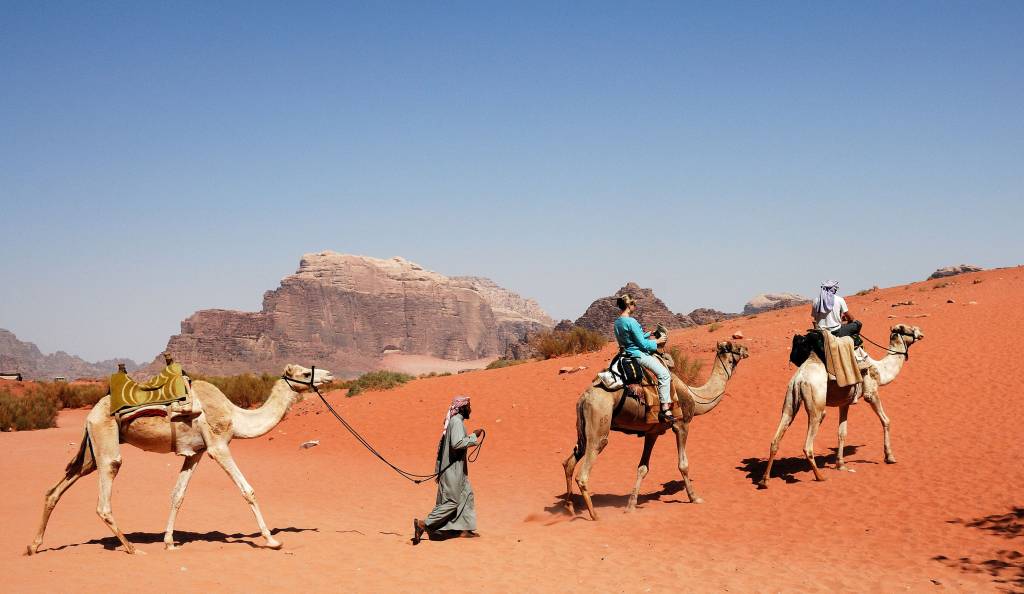
Our first stop was in Amman where we visited the citadel with its Umayyad Palace. The photo on the right below, taken in the palace, contains what I call the ‘Finger of God’ pointing towards Heaven.
From Amman we also visited Umm Qais, overlooking the Golan Heights.
At Umm Qais we saw the heights and had views into Israel, Lebanon and Syria. In the second photo on the right below a chap is using a tea dispenser, often seen in the Middle East, to pour a cup of tea in an unusual manner.
Umm Qais was once called Gadara and was the site where the Gadarene Swine incident took place.
We also visited the desert palace (literally in the middle of nowhere) at Qasr al Kharanah where we saw those rusty desert colours so much a feature of Jordan.
Also visited were Madaba and Karak .
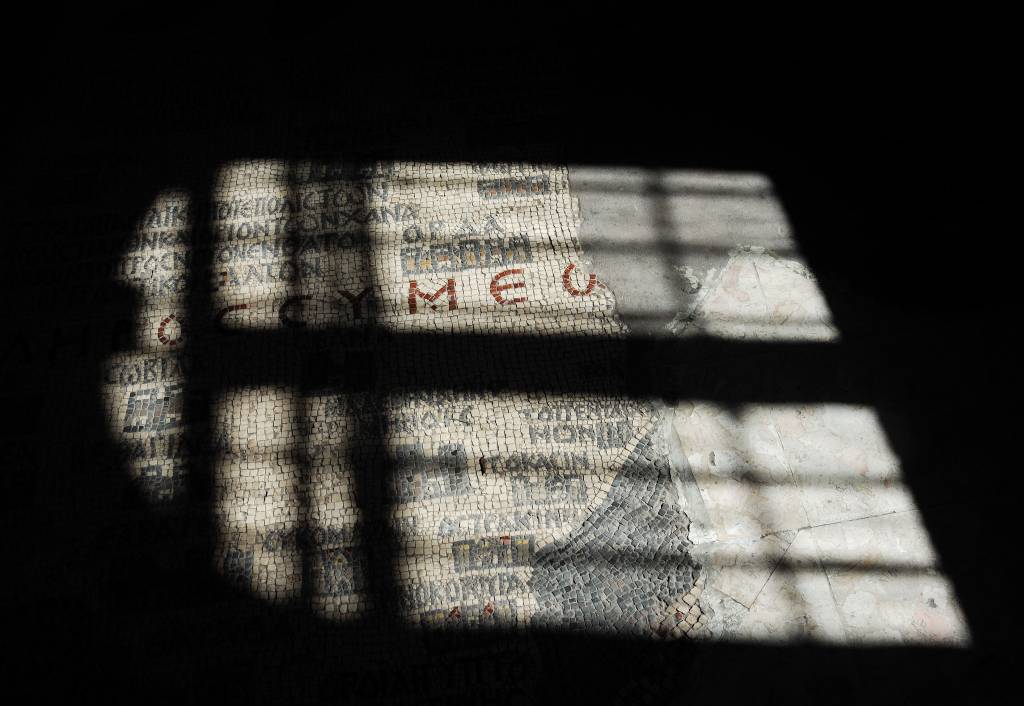
The next destination, Karak, contained a Crusader Castle, not dissimilar to the one at Krak Des Chevaliers shown in my article about Syria
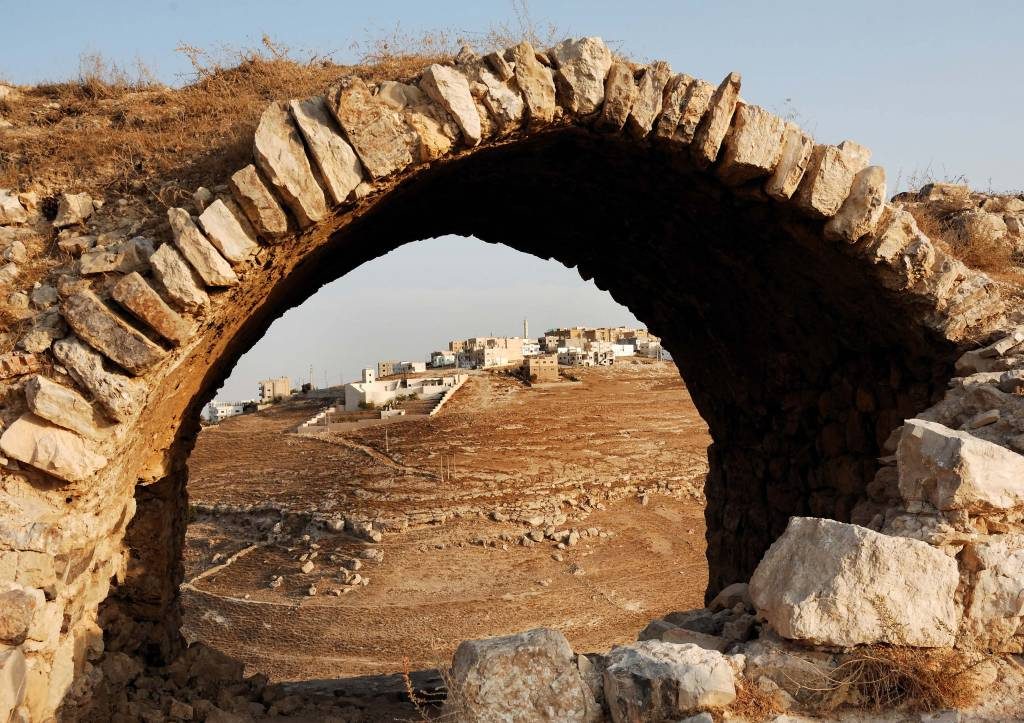
It must be recorded that Karak contains a statue of Saladin, the arch enemy of the Crusaders, on a horse in the centre of the city.
The remainder of this article deals with the two highlights of the Jordan visit, Petra and Wadi Rum.
Petra is the site of an ancient city built by the Nabataeans. The main area of interest is approached through a very narrow canyon called the Siq. This is best walked, but if you are anxious to get to the main attractions you can speed along in a horse and trap with the local Bedouin, reminding me very much of their counterparts in Ireland. All of this leads to the classic view of the famous Petra Treasury Building seen through the narrow slit of the Siq.
Beyond the Treasury lie other buildings, tombs and arches.
Again, there is a choice of walking or taking the local modes of transport courtesy of the Bedouin.
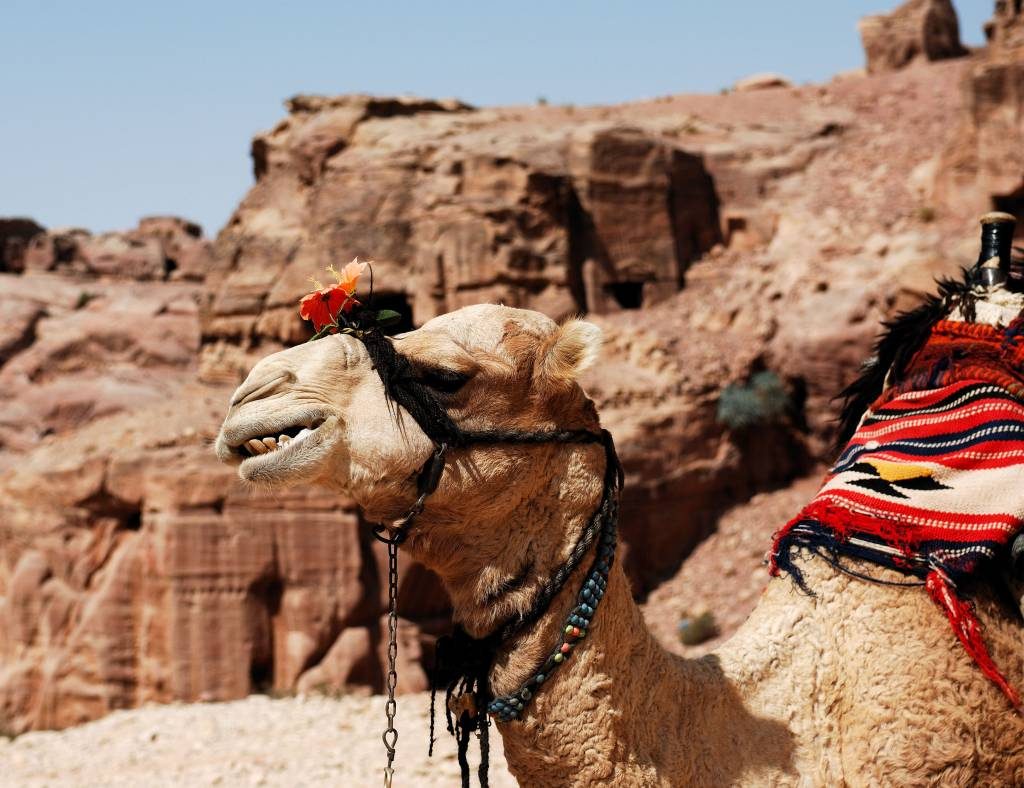
The little fellow on the donkey in the last photo is not offering transport, but is, in fact, herding goats.
Finally on to Wadi Rum which is familiar to fans of the film Lawrence of Arabia some of which was shot there. On the way in to Wadi Rum one can view the ‘Seven Pillars of Wisdom’ rock formation. This was the title of the book by T.E. Lawrence on which the film was based.
I actually preferred Wadi Rum to Petra as, for obvious reasons, it was much less crowded. In addition, the red sand and rock formations were absolutely stunning.
You can stay (we did not) in Bedouin tents at Wadi Rum, but I would suggest that anyone wanting to do so should check out the local climatic and natural conditions as well as the facilities available. I would also suggest that a good guide
The photos above were generally taken with a Nikon D2Xs which is a sturdy professional type camera ideal for the conditions in Jordan. However, a camera of that size and weight would not suit me at all 12 years later.

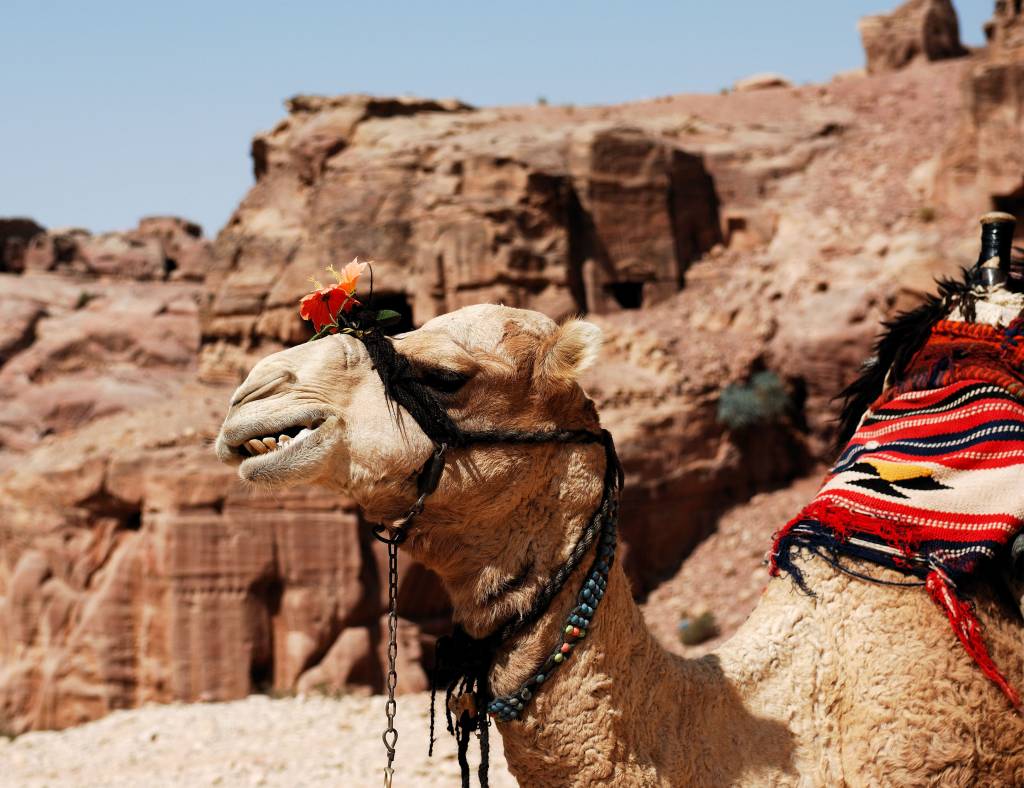
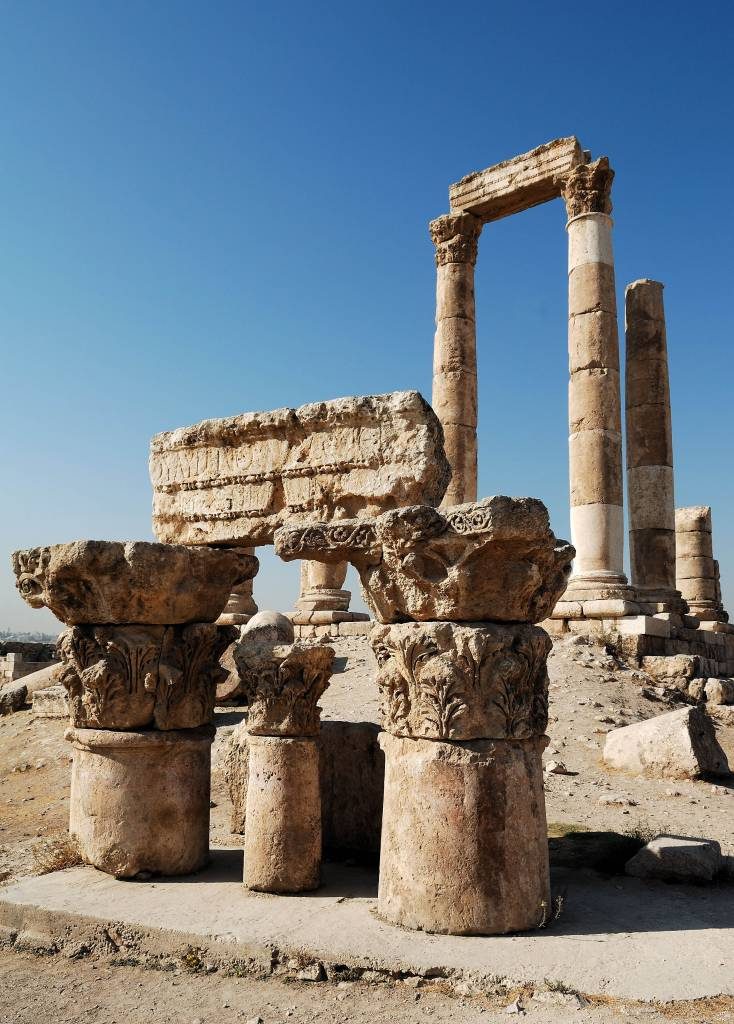
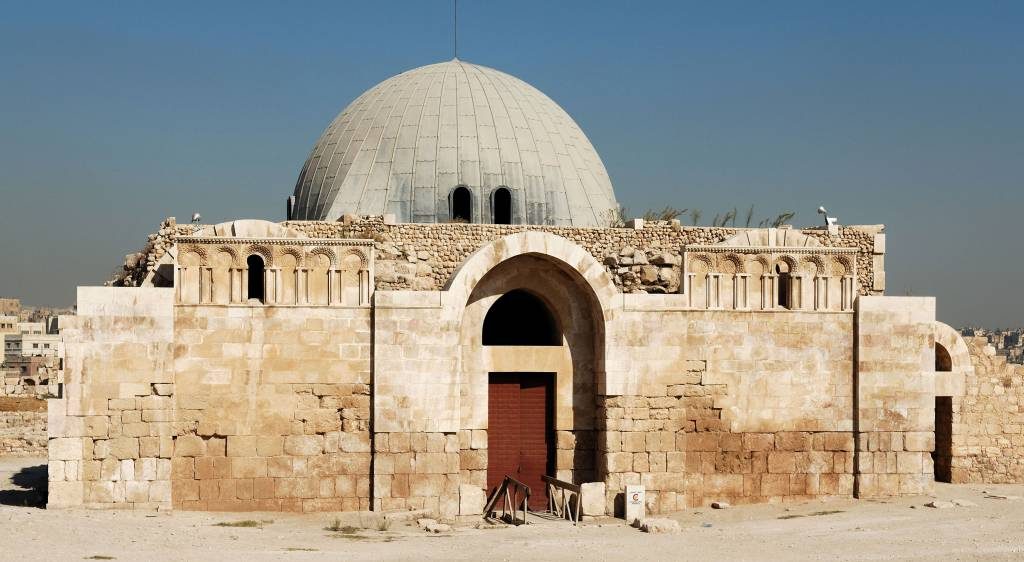
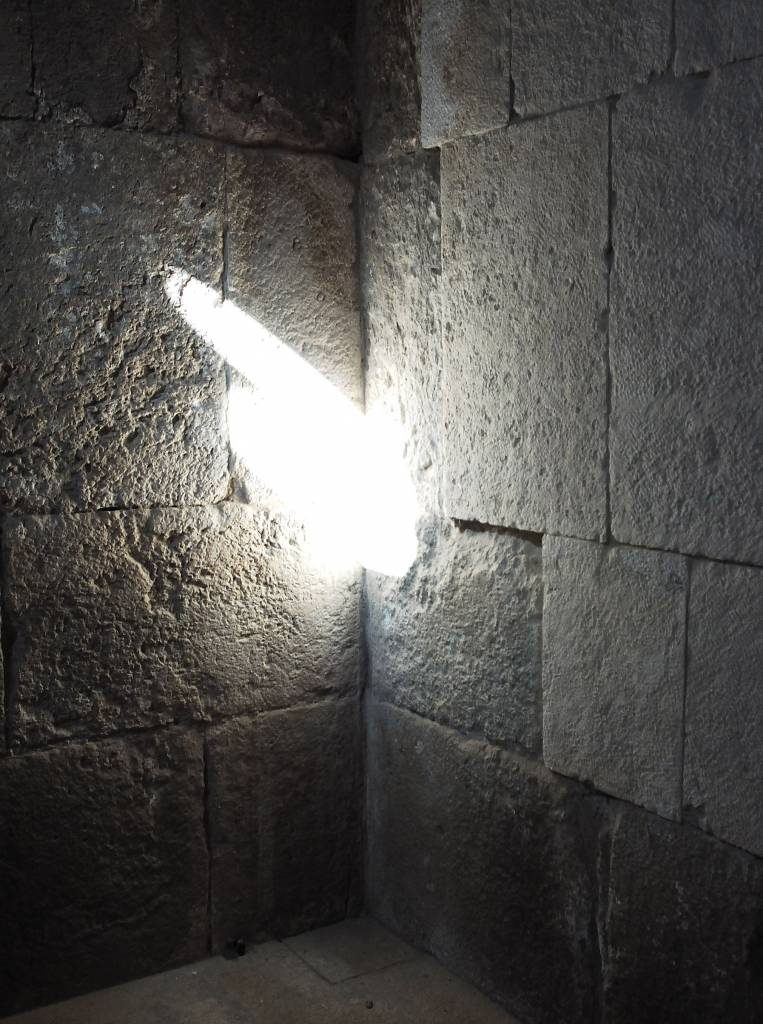
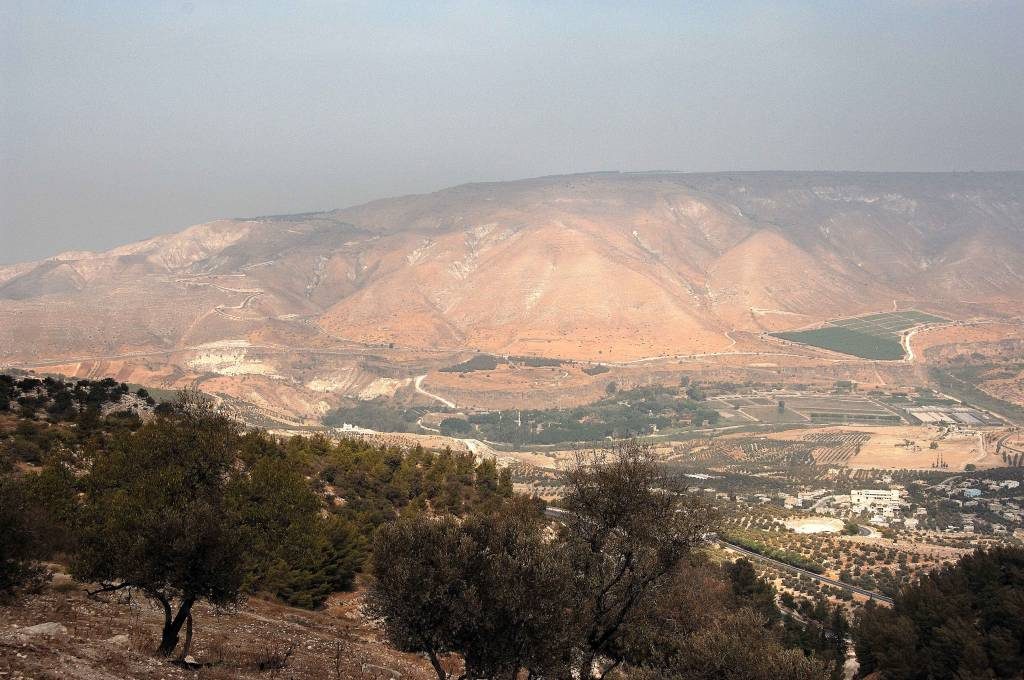
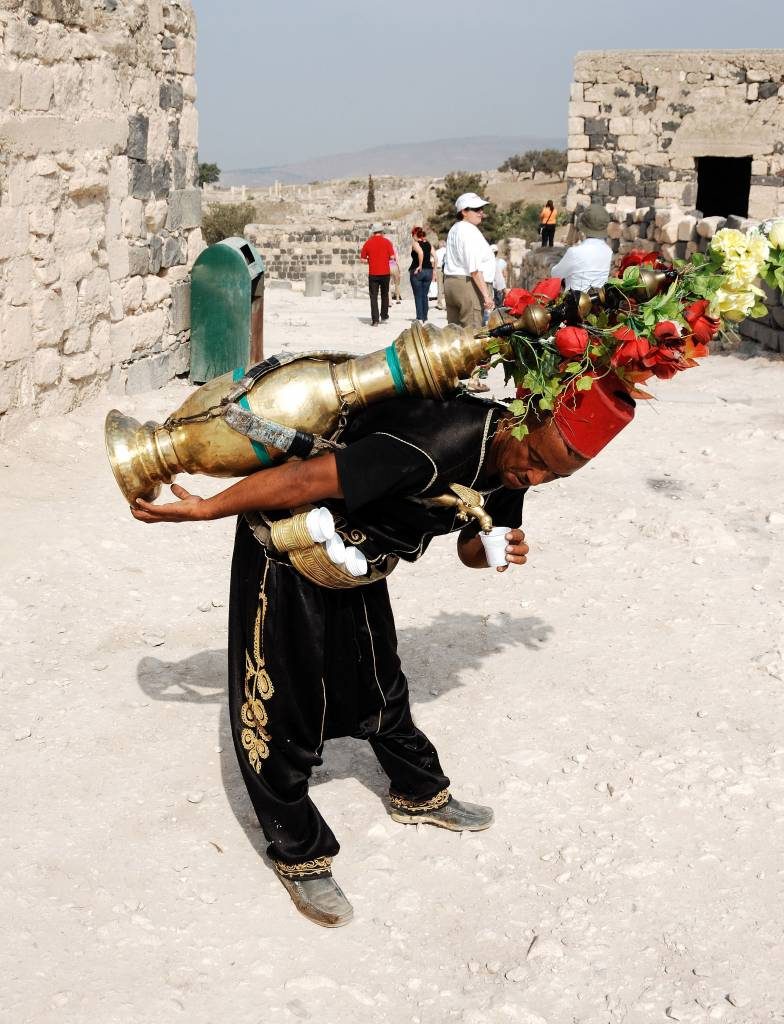
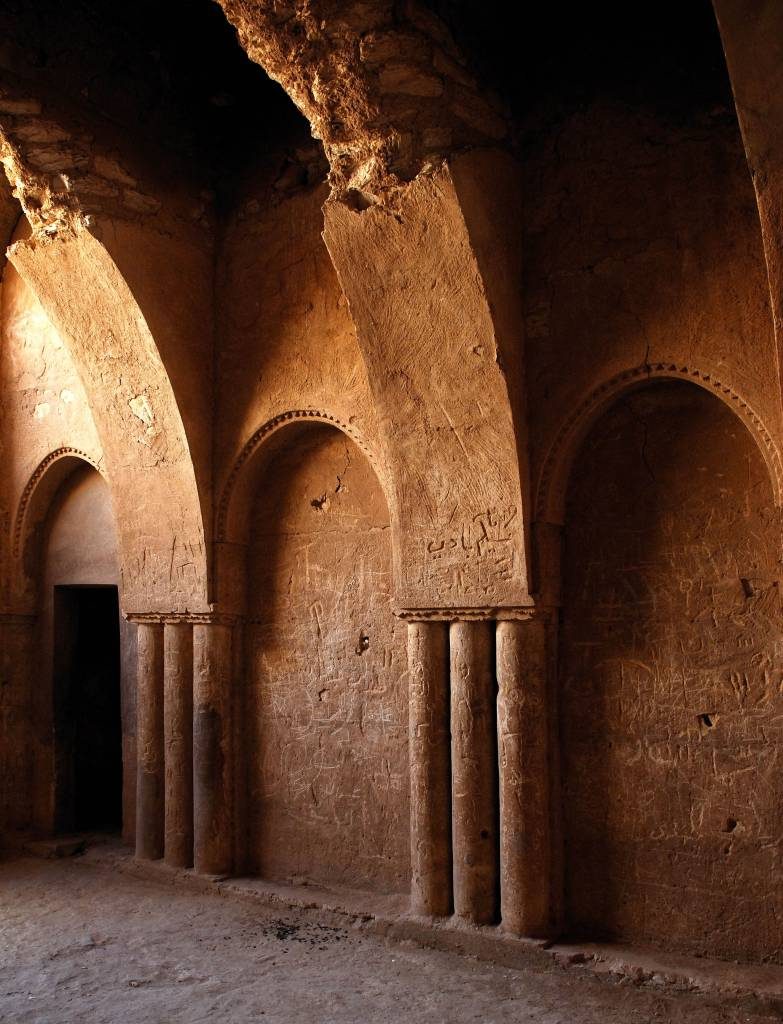
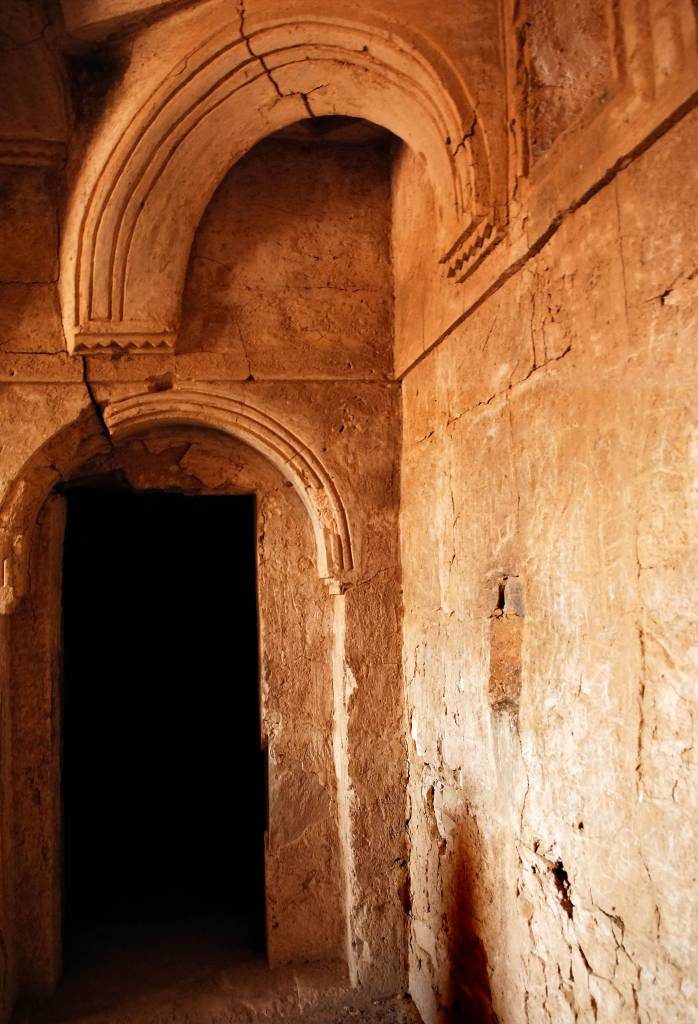
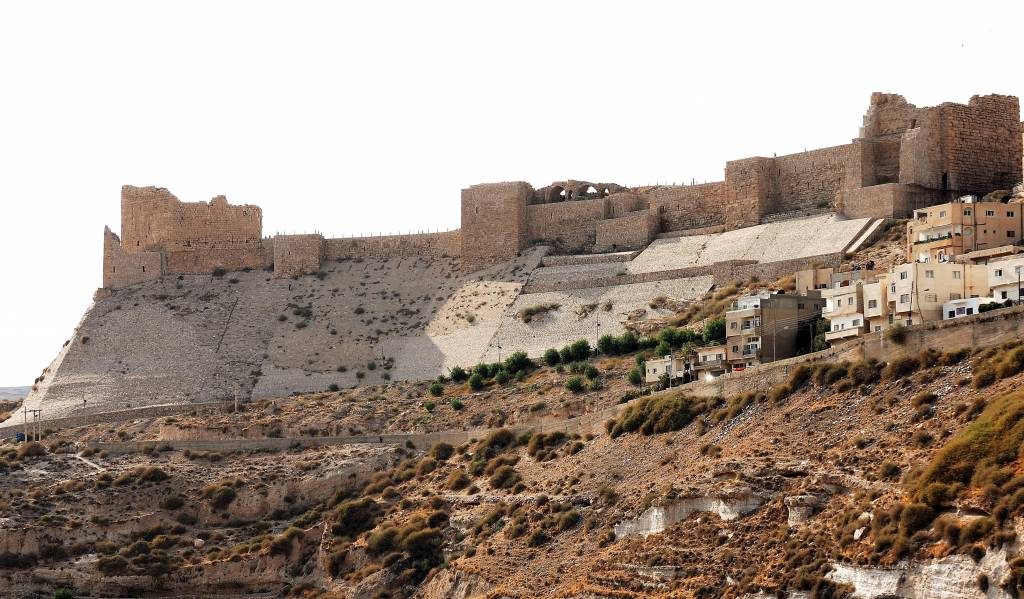
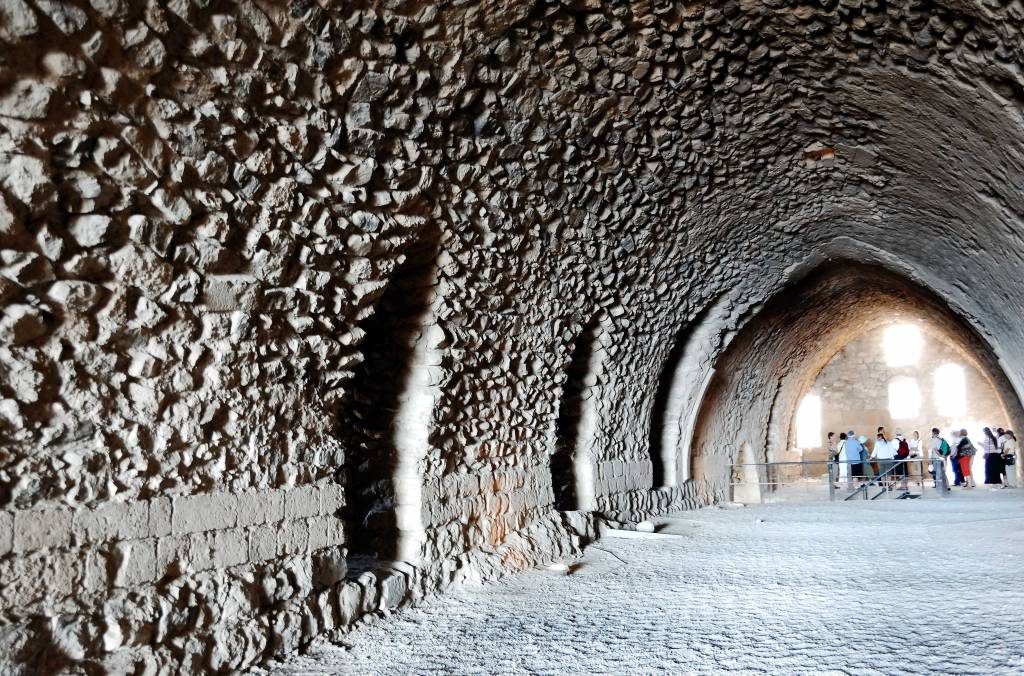
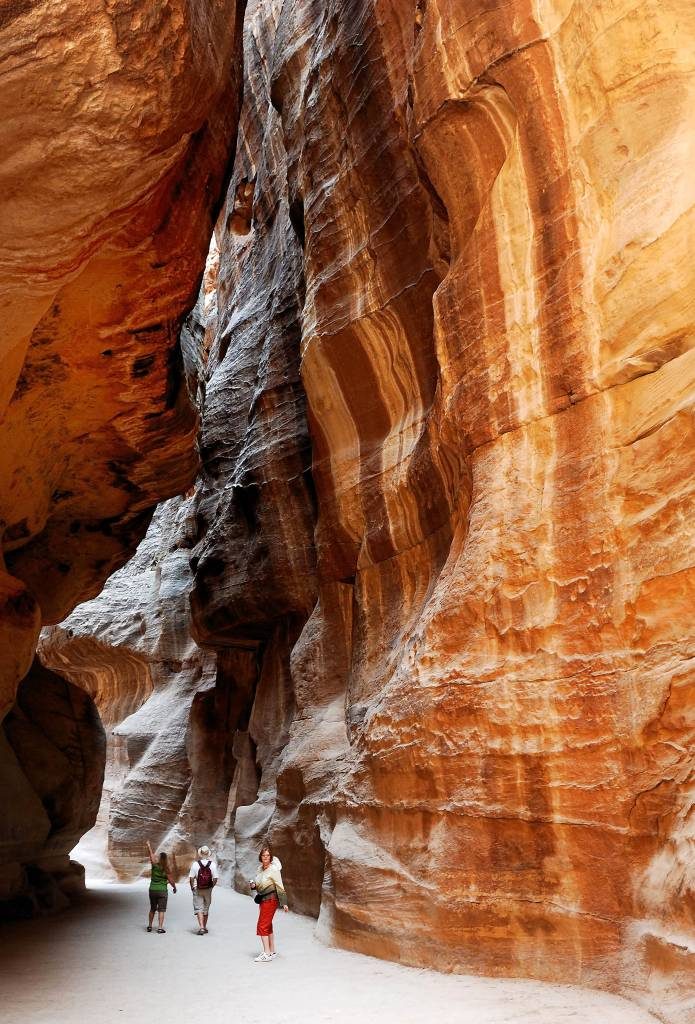
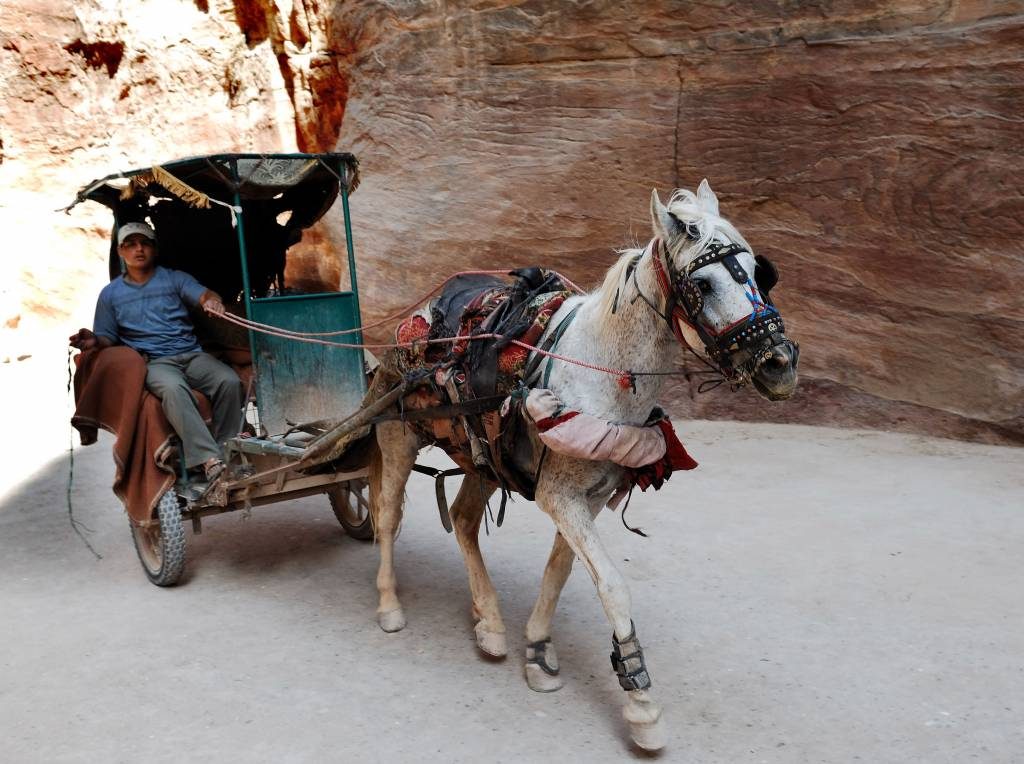
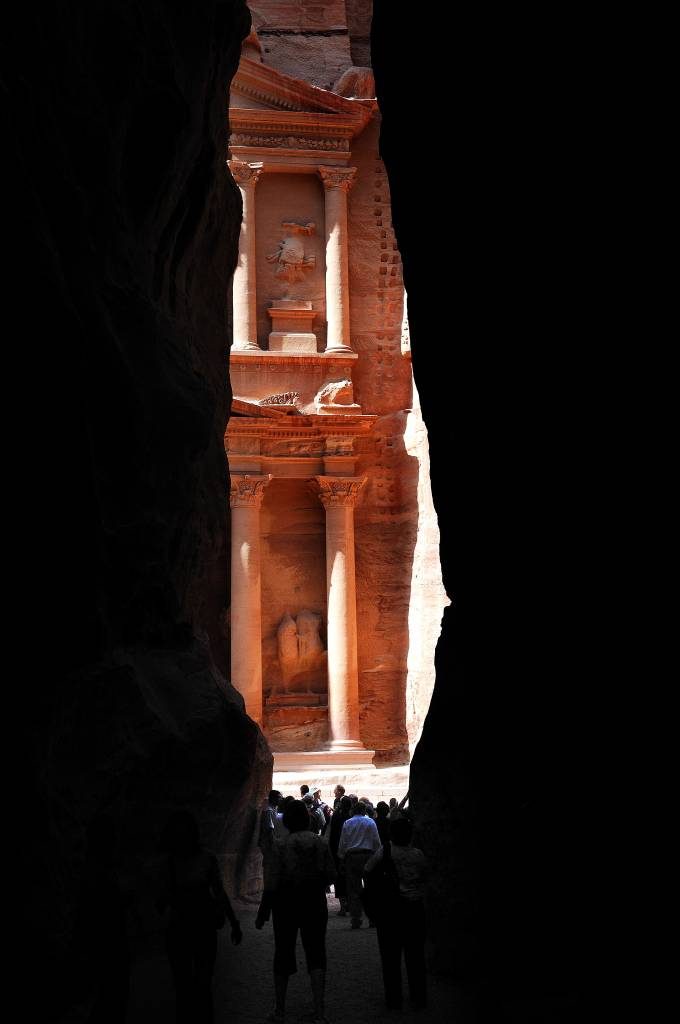
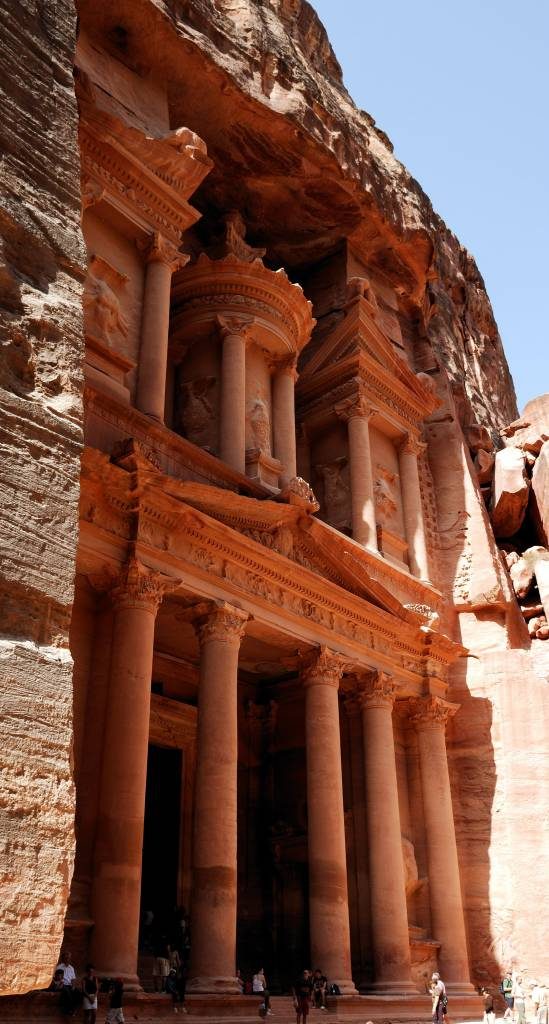
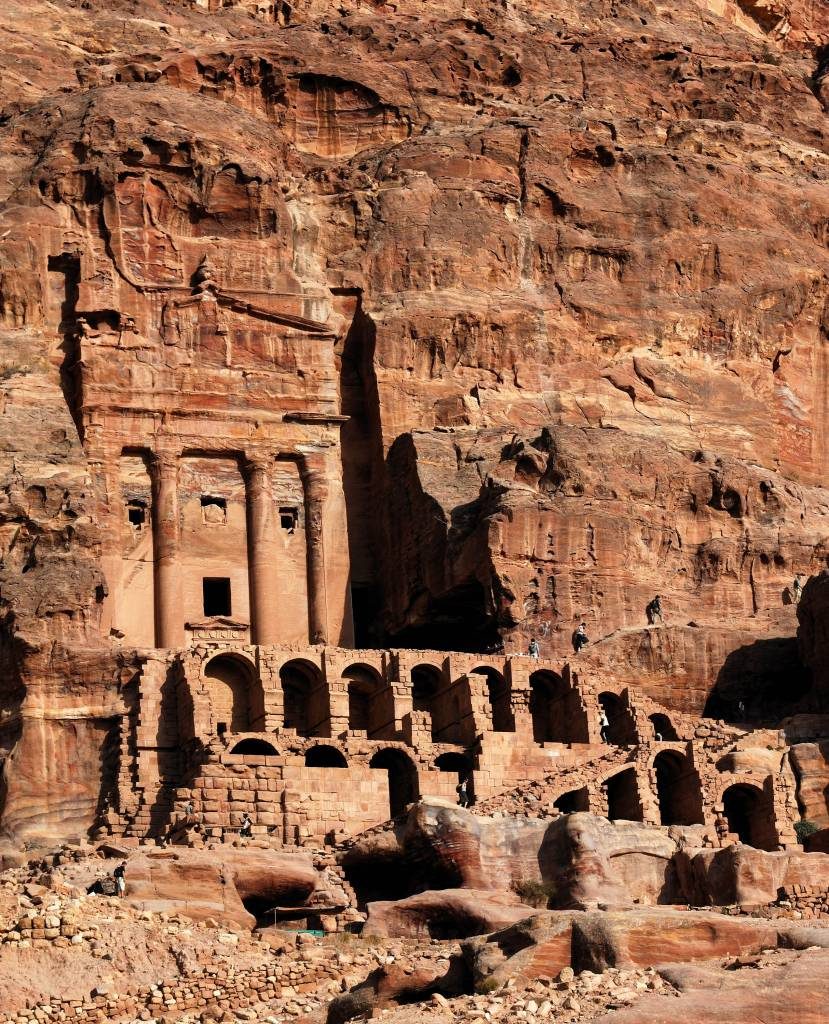
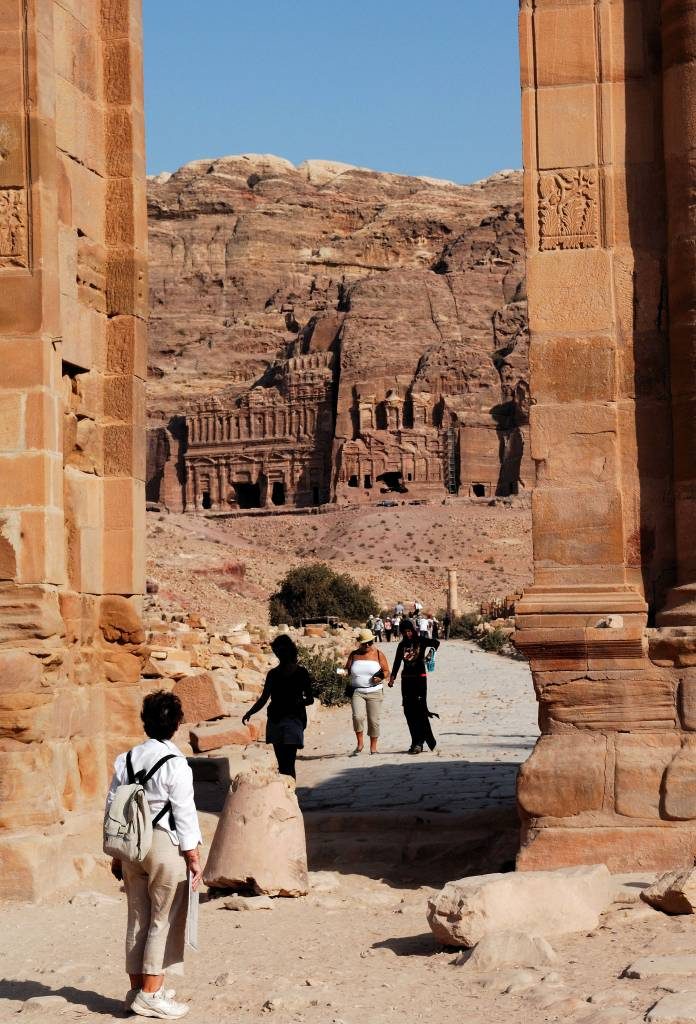
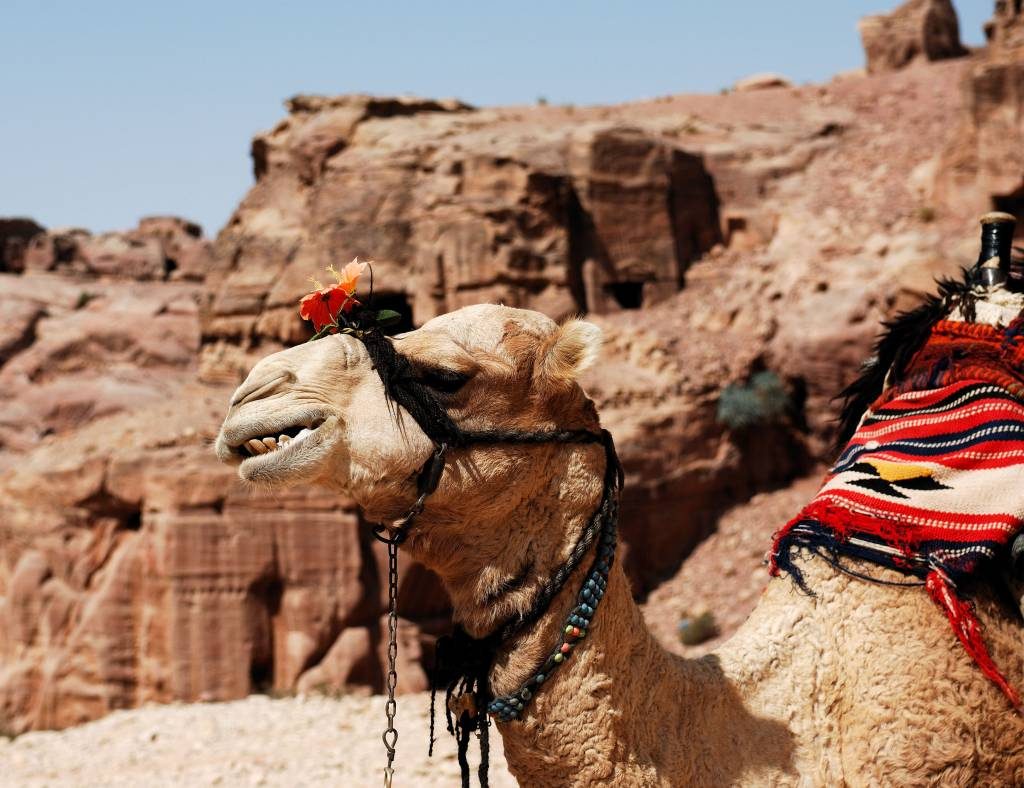
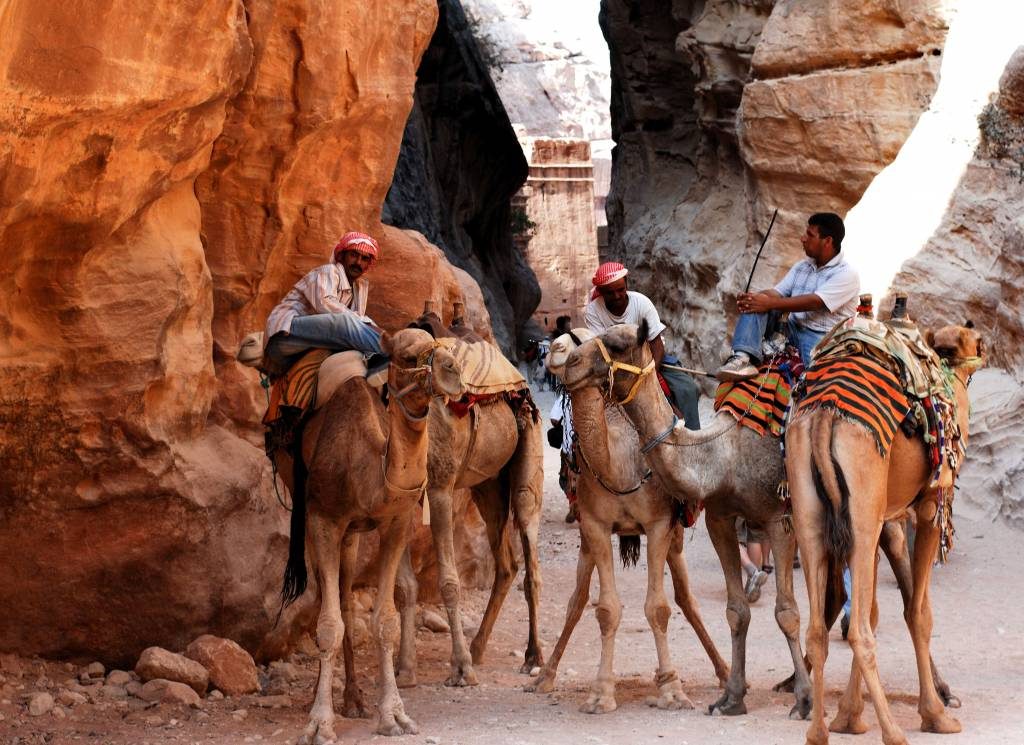
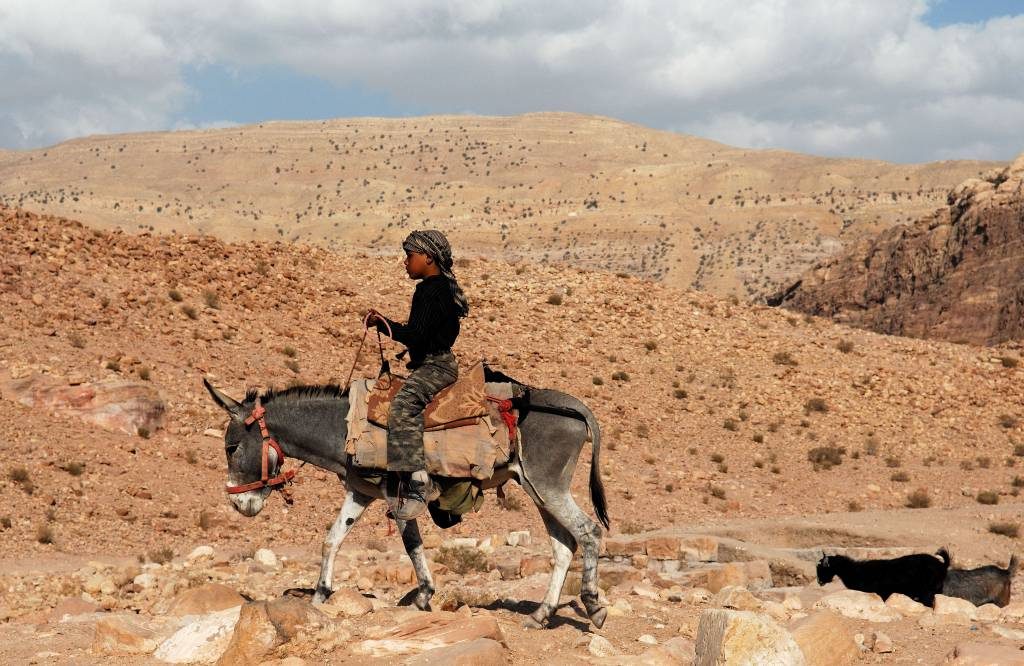
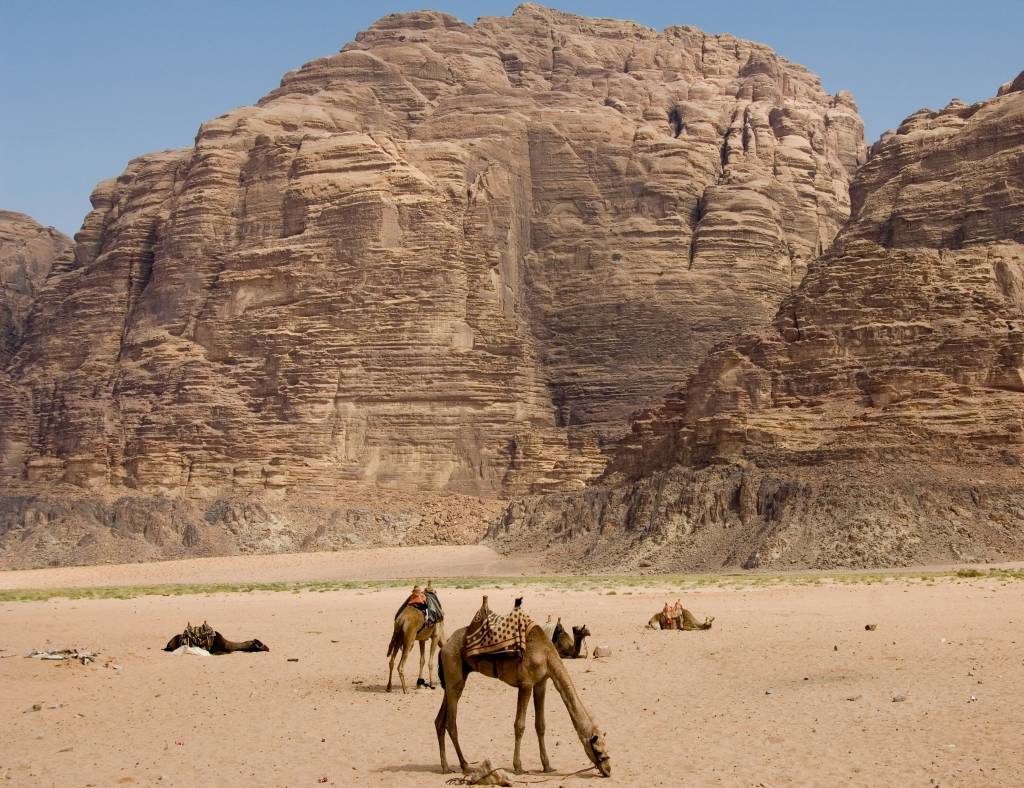
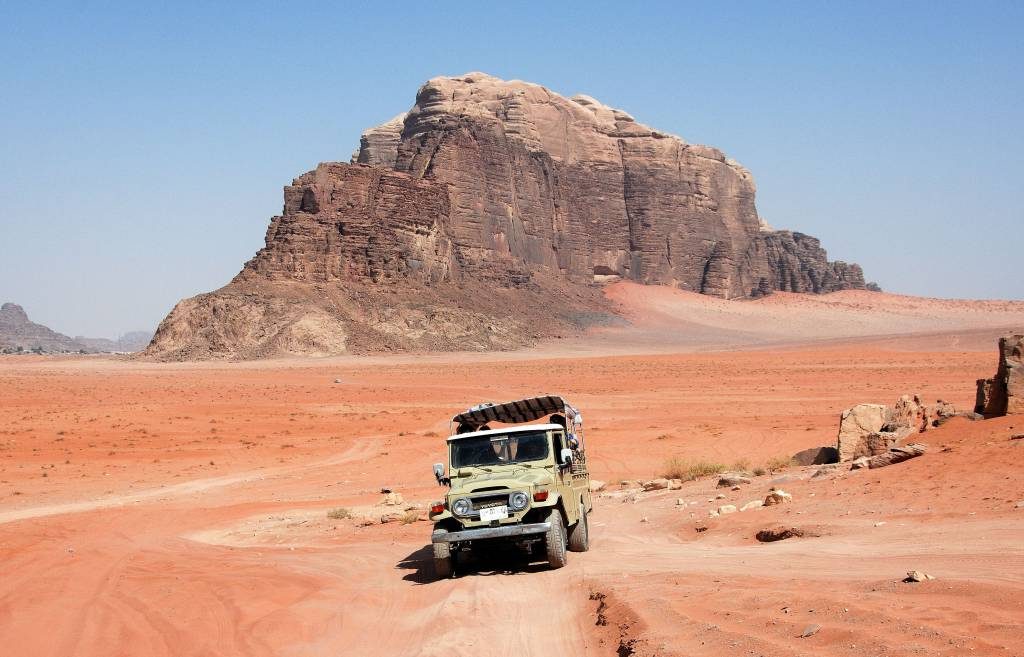
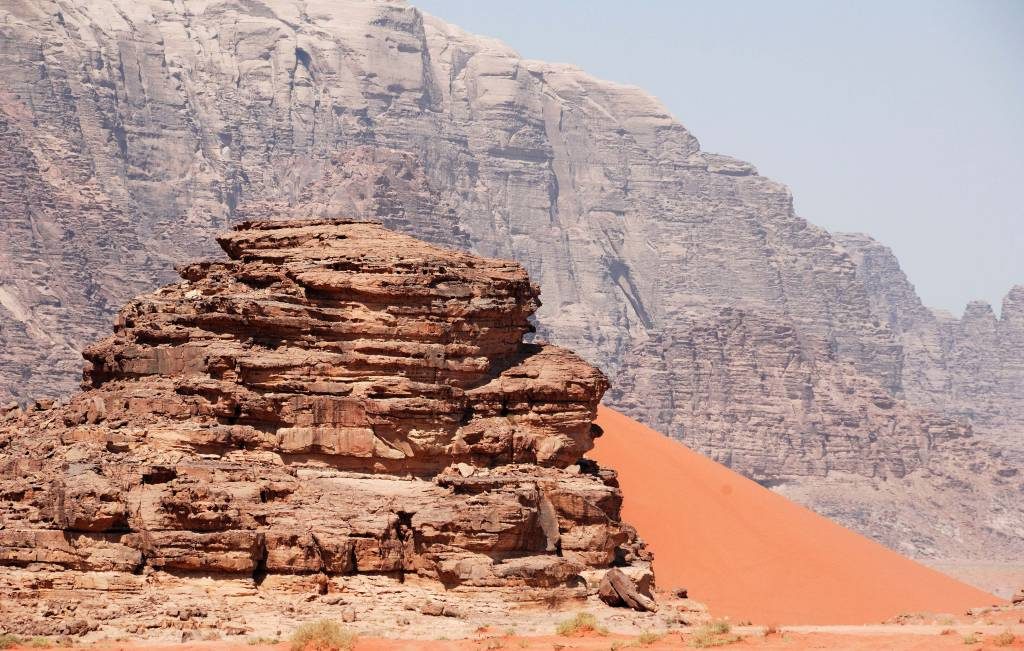
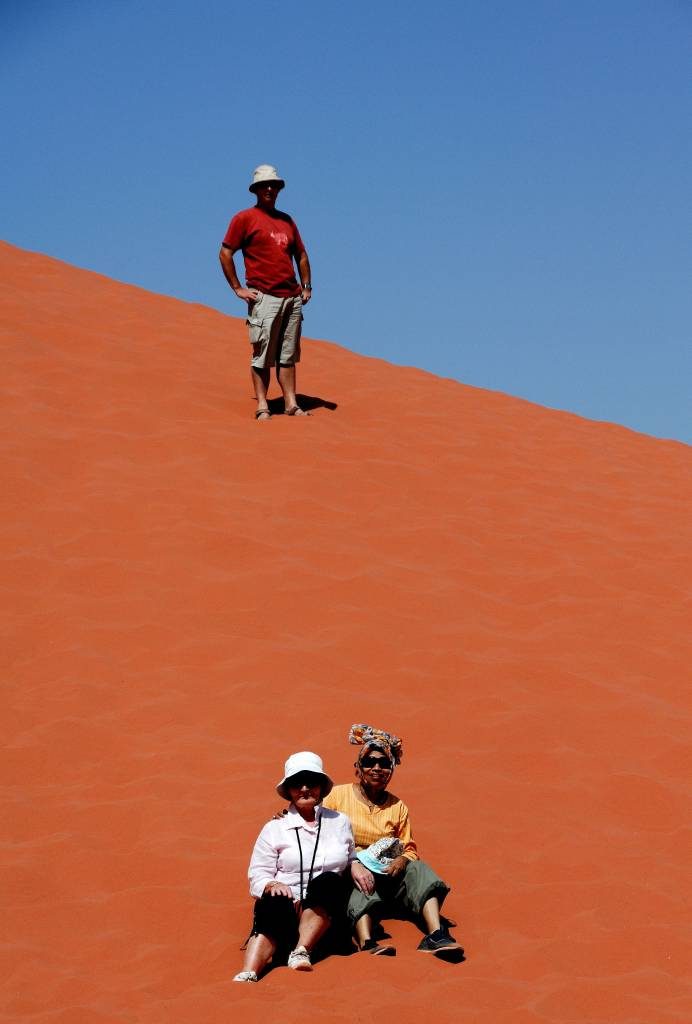
Fabulous pictures of a fascinating part of the world. I’ve never been to the middle east, but have spent a fair amount of time in Arizona, parts of which look much like your Wadi Rum pictures. I don’t think my pictures do as much justice to Arizona and yours do for Jordan. Very well done indeed.
There are some red sands in the American deserts which resemble those at Wadi Rum. The last shot with the deep red sand truly reflects the colours at Wadi Rum. I saw a group which included my wife sitting in a narrow triangle on the side of the reddest sand dune I had ever seen and I could not resist taking the shot. My favourite shot of all of these was the one of the little bedouin boy on a donkey tending goats. Apart from his clothes, the scene is almost Biblical. You might ask why was he not at school when I took this shot in the middle of the day? However, a lot of the Bedouin children were very good English speakers and were obviously well educated. We met a young man selling the book called ‘Married to a Bedouin’ which had been written by his mother, a Dutch woman who had done just that.
William
What is worth mentioning is that William’s excellent article has been on the stocks for a couple of months, over the move from Squarespace to WordPress. To do it justice, it needed the lightbox effect up and running — something that was missing for the first few weeks after the move. As a consequence, I had been avoiding galleries of photographs since there was then no way to expand them. I’m glad to say that we now have lightbox working properly and, in a way, it is an enhancement on the old Squarespace. Now you can highlight one picture and then progress through every image in the article. With an article such as this one by William, I’d recommend reading it through and then clicking on one of the images to see the full gallery of larger images.
Thanks Mike. All is working well now. We can have a chat in a few weeks when we meet at the Leica Society AGM in Nottingham about the best way to design articles to work with the new format. With the new format it is easy to flick through panels of photos and that might be the way to go.
William
Yes – a tremendous advantage over the going in and out of the old site!
John.
Hi William, a very informative article with fascinating photos. I particularly love the arch with the buildings in the distance and the last image communicates the desert aspect beautifully. The colours and textures almost make me want to go there (but I am no longer so adventurous now that I am getting longer in the tooth!). This article illustrates that we do not need the latest tech to capture worthwhile images. Thanks, Brian
Thanks Brian. That arch is on the crusader castle at Karak looking towards the modern town. I took a very similar shot at Krak Des Chevaliers crusader castle in Syria which we visited about 2 years later. The effect I was seeking was looking from the old onto the (relatively) new.
William
Hi William, Excellent article, wonderful shots – what a beast the old D2Xs was. Dave
Thanks Wayne, Jean and Dave. The colours in Jordan were wonderful and, even though I was using a big old lump of a camera, it always gave me what I saw. The sand in Wadi Rum truly matches the pink buildings and rocks in Petra with its deep red colour. Every time I have watched the Lawrence of Arabia film since my visit to Jordan, I keep getting flashbacks of my own visit. In this case, the photos truly reflect my memories. And I cannot forget the Bedouin people who have mastered what would seem to us to be a hostile environment with their ‘ships of the desert’.
William
Stunning photos. The colours are fantastic and so is your framing. The ocre tints are really amazing in Petra and the entry of the canyon reminds me a bit of some of the colours you may have at antelope canyon in the US. The output of the old nikon no matter how bulky it is is really amazing. Thanks for sharing and have a nice St patick’s night
Jean
Enjoyable images William. The colours are special.
Just wanted to say that it was a delight to revisit these places with you and to be referred to your Syrian report from 2016 (which I had not read before) with many recognisable spots. i was also in Syria before the hostilities broke out and had your experience of a young guide reading the Lord’s Prayer in Aramaic there (in St Serge’s Church where I did sneak a photo or two with my discreet D-lux 4. (I sometimes wonder why I ever bought another camera!) Thank you for good photographic sharing – so much more important ultimately than the gear.
Thanks John. Our Syrian guide spoke to a priest at the church in Maaloula and the priest made it quite clear that photography was not permitted. The memory of that church will, however, last with me forever, not only because of the reading of the Lord’s Prayer in Aramaic, but also because of the questions in Farsi from the Shia people from Iran. It showed in a way that was quite unexpected that we are all the same in the right environment and when something truly ancient and wonderful is shared. Damascus was a bit the same around Straight Street with mosques, Christian churches and synagogues all close to one another. Maaloula is a truly special place in a visually stunning location. We can only hope and pray that it becomes once again what it was 10 years ago.
William
Do so much agree!
John.
To you and yours, damn spell check popped in Toyota!
This made me laugh. 🙂
FANTASTIC, I keep looking at photos waiting for Harrison Ford or Sean Connery, or Brendan Fraser, or Peter OToole to come out riding a camel! Just superb Sir, early Happy St Pats day, Toyota day yours.
Thanks John. If you look at the film Lawrence of Arabia you can see the hill behind the jeep featured in some of the main scenes. Being where it is, it is completely unchanged since the film was made in 1962. David Lean’s film gives a very good insight into the times it represents and particularly the assimilation of Arab culture by Lawrence. Somebody once told me that the book ‘Seven Pillars of Wisdom’ by T.E. Lawrence, which was a large part of the basis for the film, was the finest insight into Arab culture ever written by a European. I don’t know if this is true, but I recognised a lot of what was shown in the film, particularly by the characters played by Alec Guinness and Omar Sharif. As for scenes of a camel arriving out of the desert, the scene with Omar Sharif will probably never be equalled.
I hope that you too have a great St Patrick’s Day. We are planning the usual celebrations here in Dublin.
William
Fascinating William and lovely photos, many thanks. I remember our family visit to Jordan back in 1992 when we visited most of the same sites. The view of the treasury building in Petra, coming as something of a surprise after the trip down the narrow Siq, remains a favourite memory. Kevin
Thanks Kevin. The Siq is a truly magical place with the big reveal of the Treasury at the end. The Bedouin people who live there know are really at home in that location, but, coming from Ireland, I would have seen familiar things like the ‘sulky’ or ‘trap’ being pulled by the white horse. Luckily, we could hear him coming as the passage in the Siq is very narrow. In Qatar I got on very well with the Bedouin, particularly when I made regulations to facilitate the use of wireless controlled mechanical jockeys for their camel races. Their relationship with their camels is very close and they like to talk to them through a little loudspeaker when they are racing.
William